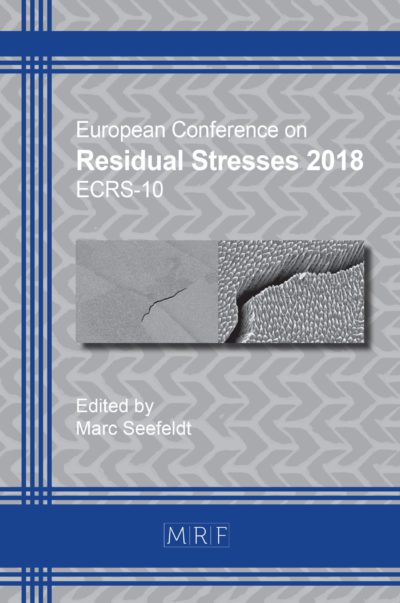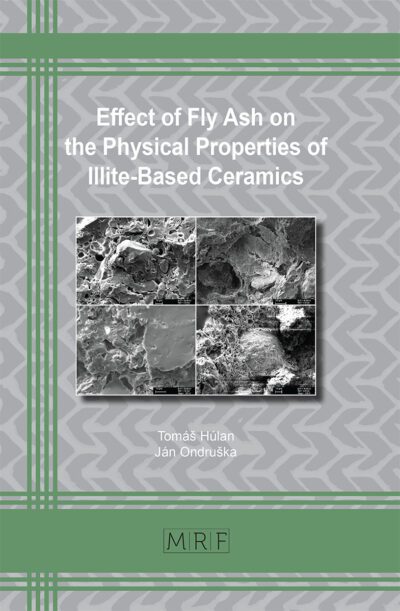Mechanical properties and microstructures of steel-reinforced rebar exposed to heat
Yousef ALSHAMMARI, Fatemah ALOWMI
Abstract. Reinforced steel rebars are well known for their unique properties that give the concrete its strength and durability. Concrete is one of the most composite materials that have been used in the world. Most of the buildings in the Middle East are made using reinforced concrete. The harsh, dry, and hot weather conditions in the region might cause incidents such as fire. To understand the effect of elevated temperature on the building structure and integrity, it is essential to study the impact of heat on the properties of reinforced steel rebars. Fire can effectively change the properties of steel rebars in many ways. Moreover, the cooling process of the fire is important to recognize due to the effect of cooling on the microstructural modification of the steel rebars. In the big picture, each cooling process scenario must be designed and explored. For this study, the focus is to investigate the effect of heat on the reinforced steel rebar once it has been cooled naturally. Besides the control sample, four different heat scenarios were studied. Namely, the as-received rebars have experienced heat values of 300℃, 500℃, 700℃, and 900℃ by employing a muffle furnace. The selected heat profile was chosen to simulate scenarios with low, moderate, and high temperatures. The tensile properties of the reinforced rebars subjected to heat have changed dramatically. The yield stress and the ultimate tensile strength decreased with the increment of the temperature, whereas the elongation increased, reaching almost double the value of the control sample. Likewise, the microstructures of those steel rebars have been altered as a result of heat exposure.
Keywords
Steel Rebar, Microstructure, Mechanical Properties, Heat, Ferrite, Pearlite
Published online 2/25/2025, 8 pages
Copyright © 2025 by the author(s)
Published under license by Materials Research Forum LLC., Millersville PA, USA
Citation: Yousef ALSHAMMARI, Fatemah ALOWMI, Mechanical properties and microstructures of steel-reinforced rebar exposed to heat, Materials Research Proceedings, Vol. 48, pp 486-493, 2025
DOI: https://doi.org/10.21741/9781644903414-53
The article was published as article 53 of the book Civil and Environmental Engineering for Resilient, Smart and Sustainable Solutions
![]() Content from this work may be used under the terms of the Creative Commons Attribution 3.0 license. Any further distribution of this work must maintain attribution to the author(s) and the title of the work, journal citation and DOI.
Content from this work may be used under the terms of the Creative Commons Attribution 3.0 license. Any further distribution of this work must maintain attribution to the author(s) and the title of the work, journal citation and DOI.
References
[1] F. Silvero, C. Lops, S. Montelpare, F. Rodrigues, Impact assessment of climate change on buildings in Paraguay: Overheating risk under different future climate scenarios, Building Simulation 12(6) (2019) 943-960. https://doi.org/10.1007/s12273-019-0532-6
[2] M.W. Jones, J.T. Abatzoglou, S. Veraverbeke, N. Andela, G. Lasslop, M. Forkel, A.J.P. Smith, C. Burton, R.A. Betts, G.R. van der Werf, S. Sitch, J.G. Canadell, C. Santín, C. Kolden, S.H. Doerr, C. Le Quéré, Global and Regional Trends and Drivers of Fire Under Climate Change, Reviews of Geophysics 60(3) (2022) e2020RG000726. https://doi.org/10.1029/2020RG000726
[3] T.N. Wasserman, S.E. Mueller, Climate influences on future fire severity: a synthesis of climate-fire interactions and impacts on fire regimes, high-severity fire, and forests in the western United States, Fire Ecology 19(1) (2023) 43. https://doi.org/10.1186/s42408-023-00200-8
[4] A.M. Gill, S.L. Stephens, G.J. Cary, The worldwide “wildfire” problem, Ecological Applications 23(2) (2013) 438-454. https://doi.org/10.1890/10-2213.1
[5] T. Kiran, N. Anand, M.E. Mathews, B. Kanagaraj, A.D. Andrushia, E. Lubloy, J. G, Investigation on improving the residual mechanical properties of reinforcement steel and bond strength of concrete exposed to elevated temperature, Case Studies in Construction Materials 16 (2022) e01128. https://doi.org/10.1016/j.cscm.2022.e01128
[6] L. Ferguson, Z. Li, J. Sims, T. Yu, Vacuum Carburizing Steel Alloys Containing Strong Carbide Formers, Heat Treat 2017: Proceedings from the 29th Heat Treating Society Conference and Exposition, Columbus, Ohio, USA, 2017. https://doi.org/10.31399/asm.cp.ht2017p0560
[7] L. Choisez, N.E. van Rooij, C.J.M. Hessels, A.K. da Silva, I.R.S. Filho, Y. Ma, P. de Goey, H. Springer, D. Raabe, Phase transformations and microstructure evolution during combustion of iron powder, Acta Materialia 239 (2022) 118261. https://doi.org/10.1016/j.actamat.2022.118261
[8] M. Mianroodi, S. Touchal, G. Altmeyer, Comparison of Forming Limit Diagrams for FCC and BCC materials using Taylor and Marciniak-Kuczynski models, International Conference on Science, Engineering & Technology – ICSET 2019, Toronto,Canada, 2019.
[9] A. Micheals, E. Allen, Using the Processing, Properties and Characterization of Brass to Teach the Differences Between Crystal Structure and Microstructure, 2013 ASEE Annual Conference & Exposition, Atlanta, Georgia, 2013, pp. 23.1345.1-23.1345.15. 10.18260/1-2–22730.
[10] İ. Topçu, C. Karakurt, Properties of Reinforced Concrete Steel Rebars Exposed to High Temperatures, Research Letters in Materials Science 2008 (2008). https://doi.org/10.1155/2008/814137
[11] Standard Specification for Deformed and Plain Carbon-Steel Bars for Concrete Reinforcement. ASTM A615/A615M-22. American Society for Testing and Materials. West Conshohocken, USA. 2024.
[12] Y. Alshammari, S. Raynova, F. Yang, L. Bolzoni, Effect of particle size and manufacturing technique on the properties of the PM Ti-5Fe alloy, International Journal of Refractory Metals and Hard Materials 90 (2020) 105246. https://doi.org/10.1016/j.ijrmhm.2020.105246
[13] Standard Test Methods and Definitions for Mechanical Testing of Steel Products. ASTM A370-24. American Society for Testing and Materials. West Conshohocken, USA. 2024.
[14] T. Islam, H.M.M.A. Rashed, Classification and Application of Plain Carbon Steels, Reference Module in Materials Science and Materials Engineering, Elsevier2019. https://doi.org/10.1016/B978-0-12-803581-8.10268-1
[15] Z. Karoly, J. Szepvolgyi, W. Kaszuwara, O. Łabędź, M. Bystrzejewski, Influence of ferrite stabilizing elements and Co on structure and magnetic properties of carbon-encapsulated iron nanoparticles synthesized in thermal plasma jet, Journal of Alloys and Compounds 619 (2015) 592-600. https://doi.org/10.1016/j.jallcom.2014.09.044
[16] P. Setia, T. Venkateswaran, K.T. Tharian, J. Jain, S.S. Singh, S. Shekhar, Influence of Si content on the microstructure and mechanical properties of silicon stainless steel, Materials Science and Engineering: A 829 (2022) 142141. https://doi.org/10.1016/j.msea.2021.142141














